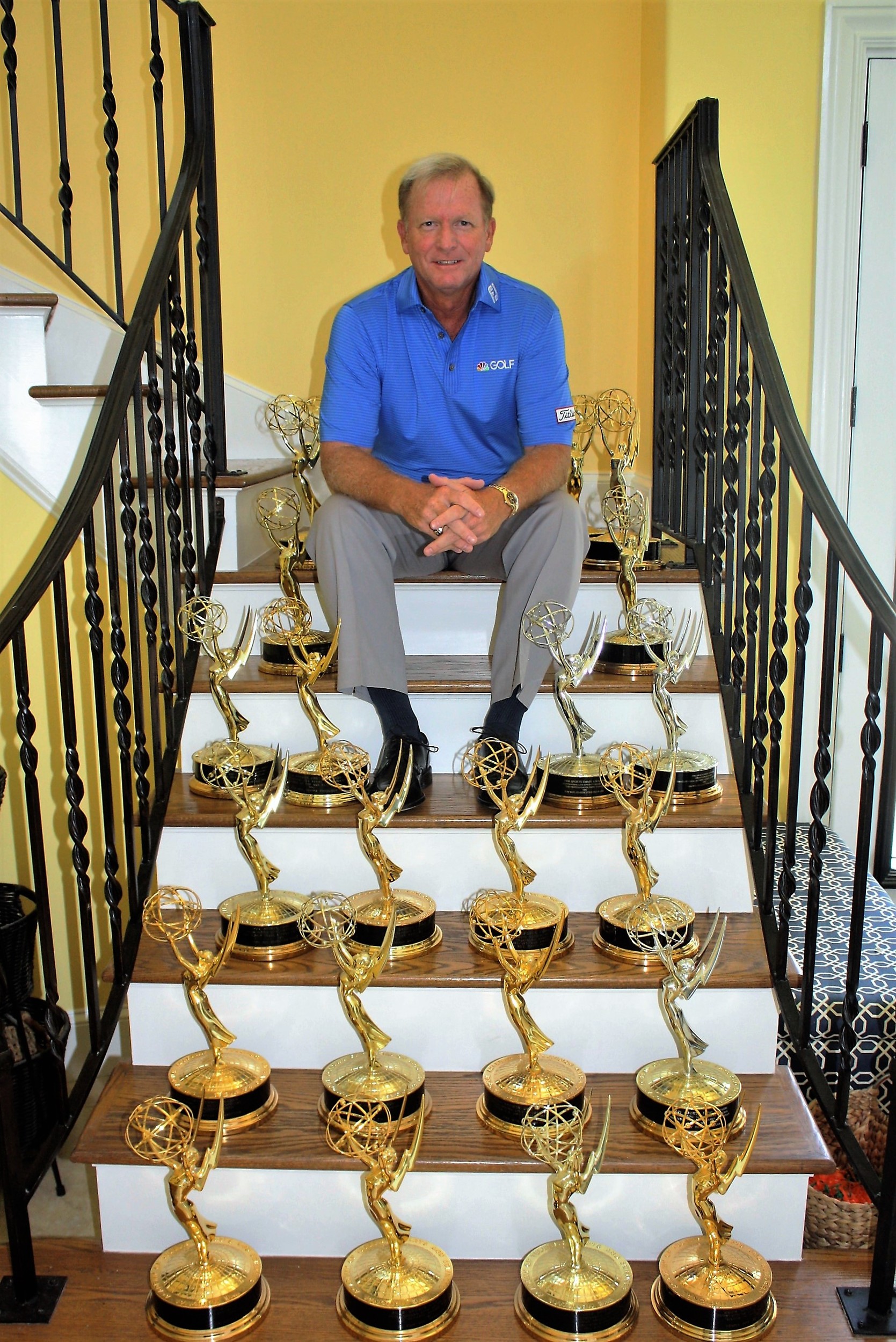One of Us: Tommy Roy
If you watched any of THE PLAYERS coverage on television last week – or have watched any major professional sports coverage over the past two decades, for that matter – chances are you’ve seen the handiwork of Tommy Roy. As a producer with NBC Sports and Golf Channel, Roy has covered some of the seminal moments in sports history. A Marsh Landing resident, Roy describes some of the unique challenges of covering golf, especially the tournament held each year in his own back yard.
You’ve enjoyed a long career with NBC Sports. What are some of the more memorable sporting events you’ve covered?
I’ve had the great opportunity in my career to be the producer or executive producer of the Olympics, Super Bowl, World Series, NBA finals, a college football national championship game, Kentucky Derby, Daytona 500, Wimbledon, and golf’s Players Championship, US Open and Ryder Cup, among others. Some of the more memorable moments from telecasts I produced are Michael Jordan’s first three NBA titles, Super Bowl XXXII when John Elway finally won it, the 2008 U.S. Open when Tiger Woods won his last major – and did it while playing on a broken leg – and Michael Phelps’ incredible exploits at the Beijing Olympics, where he won eight gold medals.
How is covering a golf tournament different than coordinating coverage of other sports, such as baseball or football? Is it easier or more difficult?
In baseball or football, as a producer, you are following one ball on one field. In golf, at any one time, there are up to 70 balls in play, on 18 different fields (holes), spread out over 50-plus acres. In team sports, they stop playing when TV goes to commercial, which gives the production team time to catch their breath. With golf, they don’t stop playing when we go to break, forcing us to work even harder making sure we are recording the key shots. After the Olympics, because of the massive size of the production, golf is the next most difficult to cover.
How far in advance do you begin planning TV coverage for a tournament like THE PLAYERS? What sort of advance work is involved?
My planning began the day after last year’s Players ended. Status quo, in my book, is never good enough, so we’re always looking to improve. So we begin early work on graphics, our videotaped features and historicals, as well as preparing research for our announcers. Of course, on a production of this size our production and technical managers are dealing with logistical prep many months in advance.
How does THE PLAYERS stack up against other tournaments in terms of coverage? Does the Stadium Course’s design play a factor in your production plans?
This is our largest, most technically advanced, golf event. The unique Pete Dye course design requires us to deploy more cameras than we normally do. For example, on the short par 3 17th, we need nine cameras to capture every angle of the island green and the players as they attempt to find land with their tee shots.
What are the technical and staffing requirements needed to cover a major tournament like THE PLAYERS?
We have 60-plus cameras and a technical, announce and production team of close to 200.
How has new technology changed the way golf is covered on television?
The miniaturization of our cameras and the use of fiber optic cables has allowed us to have more cameras, as well as have them more mobile. And Hi Def has certainly improved the visual experience of the viewers by making the balls easier to follow and accentuating the stunning beauty of these courses.
From a producer’s standpoint, do you enter a tournament with certain “story lines” in mind, or do you just wait and see how events unfold?
Again, golf is unique. If I were doing a Golden State game, Steph Curry is the story. Entering a tournament like The Players, we may think that particular golfers will be our stories, but because the field of contenders is so deep, any one of a hundred other players could lead, and we need to react accordingly.
What’s the most challenging part of overseeing coverage of THE PLAYERS?
Keeping track of all the contenders and trying to show all of their shots, live. We’re very fortunate that the PGA Tour has really limited the commercial interruptions, which gives us the time to set up and watch the leaders, shot by shot, as they make their way around this fantastic venue.
You worked for many years in New York. What drew you to Ponte Vedra?
Coming here every year to cover The Players, my wife, Anne, and I fell in love with the area. We started coming here for vacation, too. And when I started producing golf primarily, I was able live anywhere I wanted, and we chose Ponte Vedra immediately. Plus, it makes sense to live close to the PGA Tour. And because many of our events are in Florida, I can drive and avoid yet another airplane flight.
How do you enjoy spending your free time?
Well, with me being on the road so often, I enjoy spending time with my family. And, the game of golf happens to be my passion, so I play or practice whenever I have time.







